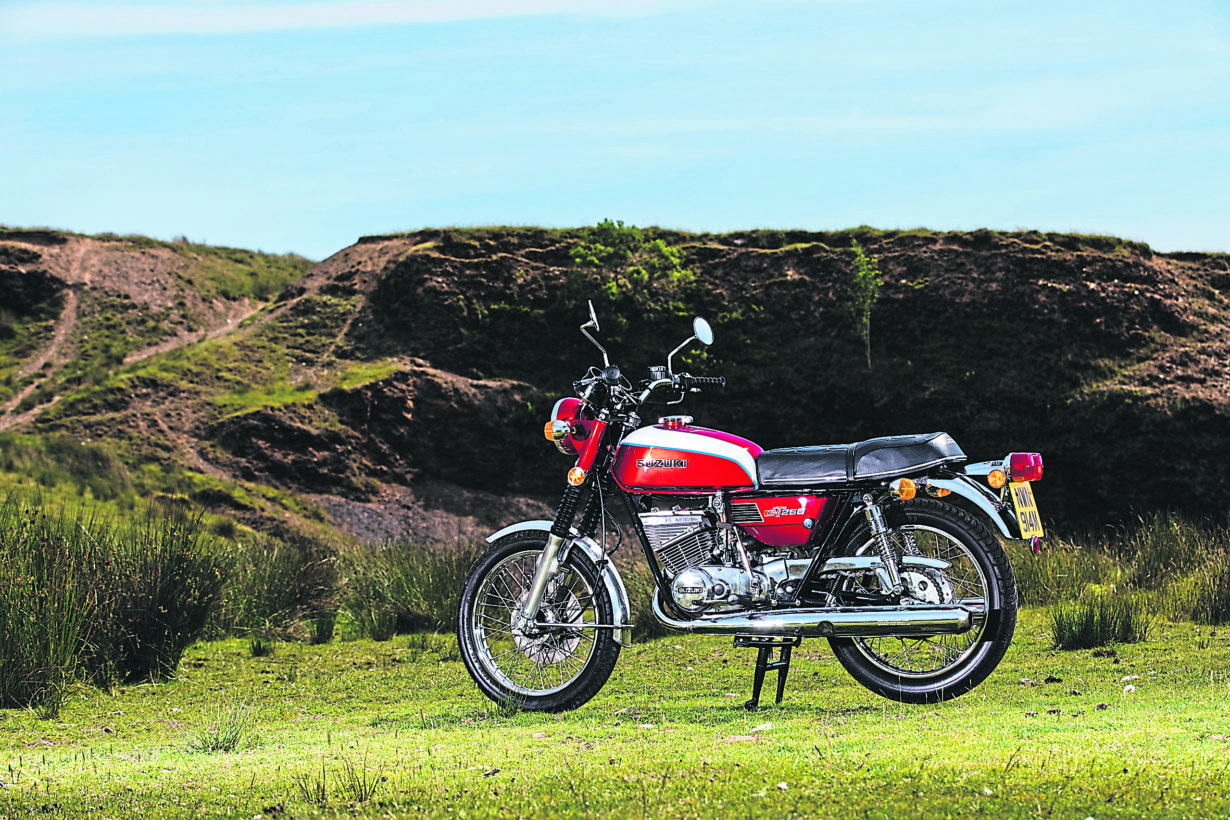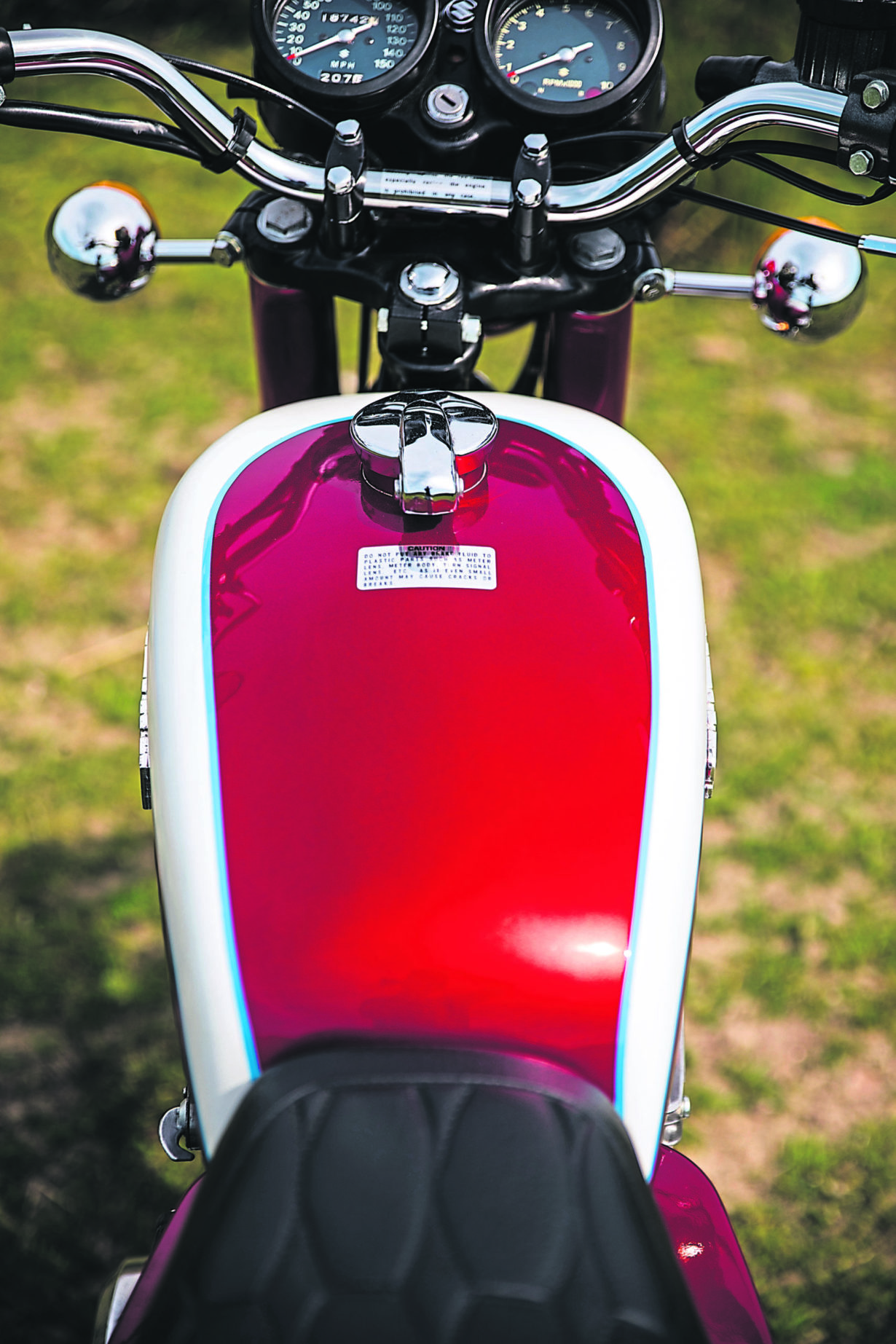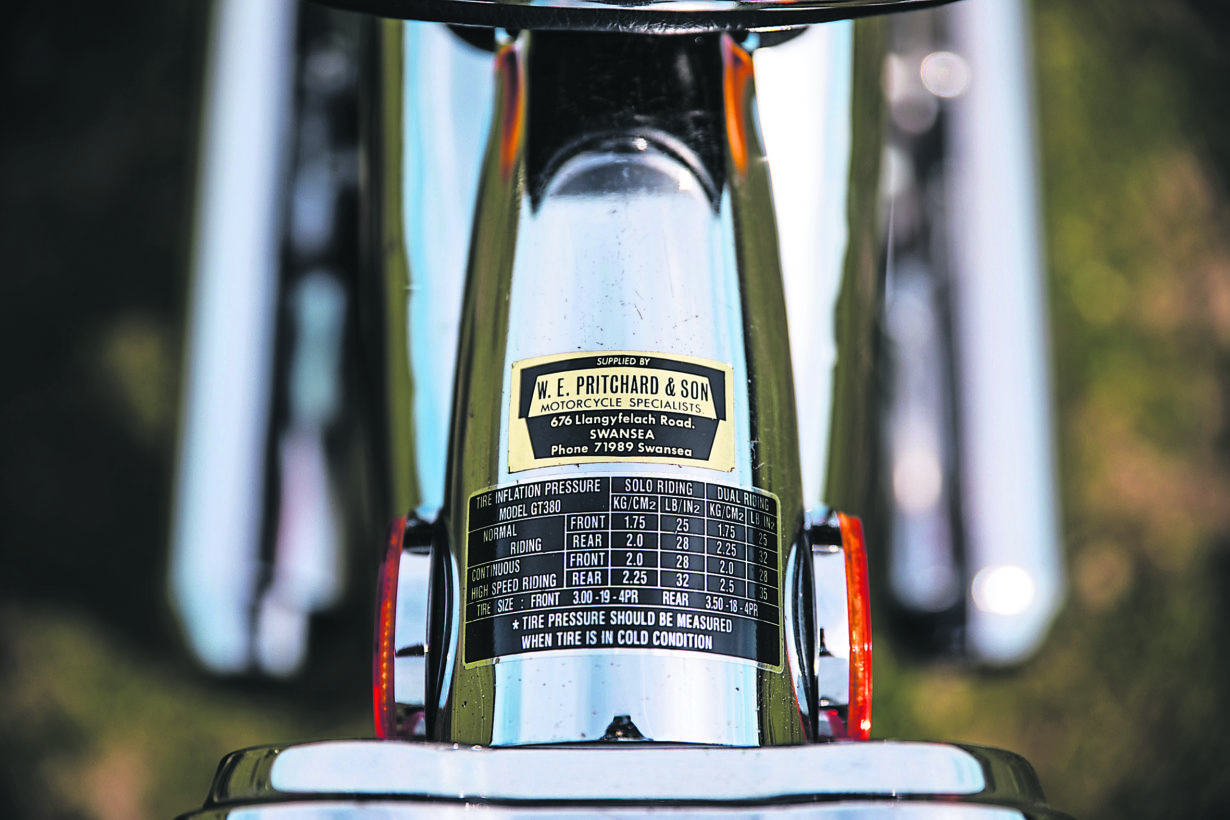Suzuki’s GT250 – well worth a look! Steve Cooper investigates..
Back when learners could ride 250s the market was hugely competitive. Everyone had a favourite and for a variety of reasons but there’s no denying which bike sold in the greatest numbers – Suzuki’s GT250. At the height of the 1970s more GT250s were sold than any other 250. Simple, robust, easy to service and fast enough for any teenager it’s not hard to see why they flew out the showrooms. So good was the quarter litre GT that courier firms even supplied them to their riders as the bike of choice!

Background
Suzuki led the way back in 1965 when they launched the ground breaking T20. Variously sold as the Super Six/X6/Hustler it laid down a blue print that lasted for four decades. Revised and modernised for 1969 the T250 would prove to be another huge commercial success for the Hamamatsu firm. Models were cosmetically updated but little else was changed. For the 1973 European market the T250 received a significantly reworking along with a disc front brake and the distinctive Ram Air cylinder head cooling cowling. Many argue it was nothing but a marketing ploy yet it stood the GT250 apart from everything else out there, got bums on seats, filled dealers cash registers and inspired a generation…not bad for dubious piece of alloy.
The bike
Unlike some new models the GT250 never went through a ‘settling in’ period or suffered from teething problems. Being based very solidly on the outgoing T250 there was nothing of the bike that hadn’t been there before from a mechanical perspective. Cosmetically the side panels had been previously used on the later T350s as had the tank but in different colours. What made the bike stand out from the crowd was the Ram Air cowling that sat over the cylinder heads. Used on every GT of the period from 125 – 550 the alloy casting was supposed the increase air velocity over the tops of the cylinder heads. The idea was that by forcing air through a large opening that then subsequently tapered to the rear air flow would accelerate and take heat out of the top of the motor. Did it work? The jury is still out on that one but it did give the bike a unique look.

Other than changes to graphics and colour schemes the GT250 really didn’t change much over the first three years of its life; the only significant difference was that the 1975 M model finally lost the rubber fork gaiters previously fitted. 1976/7 saw significant revisions to the bike although the older model was still on sale with many dealers and often seriously discounted prices…which doubtless also helped to make it the most popular 250 of the period. The Ram Air cylinder head was dropped on the GT250A although the new cylinder heads still retained their wedge shaped profiles. Supposedly extra finning was said to address the Ram Air’s absence. 28 mm carburettors replaced the previous 26 mm units, additional transfer ports were added to the cylinders and a change in compression ratio gave a little more power. Also included was a washable air filter along with revised second and third gear ratios. However, the biggest upgrade was to the crank shaft which finally received four main bearings – two per cylinder. The previous three bearing crank had been a throwback all the way to the 1965 Super Six but as power increased over the years it was obvious a fourth bearing was needed. Cosmetically the GT250 lost its fake air grills on the side panels and a simpler, less busy, graphics pack was adopted. The tuning modifications, revised porting and revised crank increased power slightly but with something of a trade-off. According to Suzuki’s PR the upgrades were supposed to increase torque as well but period road tests reported a loss of power below 4000 rpm but an increase as the motor headed for 7000 rpm.

The GT250 hung on in the face of increasing competition from Yamaha’s RD250 until the 1978 C model but the writing was on the wall. The basic design had been pushed to the limit and sales were dropping off. With its final graphics curiously aping Yamaha’s speed block design the grand old dame took a final curtain call before bowing out gracefully.
Lineage and Legacy
The GT250 proved to be a huge success in Europe and quite possibly this even confounded its makers given that it really only a cosmetic rehash. In reality the blueprint that had been serially updated and revised from 1965 through to 1978 had reached its sell-by date. Still sticking with the basic concepts of a horizontally split crankcase and six-speed transmission Suzuki rolled out an all-new design sold in the UK as the X7 but still officially designated as a GT250. The X7 lost a full 18kgs, gained reed valve induction and, almost overnight, became the 250 to have leaving Yamaha’s RD250 looking decidedly stale and old hat.

Why you might want one now
Quite possibly the GT250 is the least expensive, air cooled, 250 stroker of the period to buy now. Although present on the classic they’re rarely seen at shows which is, frankly, rather odd given that they sold by the boat load. The CCI (Crank Case Injection) oiling system is arguably the best of its kind meaning the motors tend to be reliable. It’s also physically a decent size so you’ll not feel cramped riding it. Spares situation is the same as any other bike of the period and engine parts really shouldn’t be an issue.

Typical Prices
The later X7s have become even more popular recently leaving the earlier GT250s behind in terms of prices. There’s no ‘right’ model to go for with condition dictating the values. Complete rolling projects start around £1000 yet some chancers want double that yet you can get a decent unmolested runner for as little as £2500-£2700. A good, earlier, restoration can be had for £3500 at auction. We also spotted a very tidy C model in need of a top end rebuild for just £1900 which has to be a bargain. Mint restorations are out there for £4995 and sometime even more but unless you really want one at that level £4000 maximum should see you smiling at a classic GT250 stroker in your garage. You know you want one!
#morebikes #suzukigt250 #retro #motorcycles #classicmotorcycles


